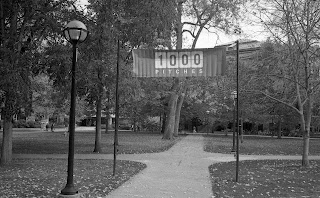I have been using various b&w films over the many years of my photography. Some of them have come and gone, only to pop up in small quantities long after they have been discontinued, such Panatomic-X, which remains one of my favorite slow-speed b&w films. The problem with some of these finds is that it's a small quantity, and I am using long-outdated film. Someone else may have different results because their film wasn't stored properly over the years. So, while using outdated film is an adventure, it's certainly not something I recommend for serious work, or repeatable results. What then, about some of the oddball films out there? The
Film Photography Project's Mike Raso has been an incredible sniffer-outer of some unusual film stocks in large quantities. Last year, he was able to import a lot of 35mm film manufactured by Svema, the Ukrainian film company. For most of us, Svema 64 was a film we had only seen in the guise of outdated single rolls from Russian sources.
I once shot a roll that dated from the 1970s. Then, the FPP started selling a slew of Svema films, ranging from ultra-slow ISO3 to Svema 200, and the Svema 125 color film (also a real favorite).
The new Svema films are all on polyester or PET bases, making them exceptionally resistant to curling after development. That makes them scan beautifully, with everything being perfectly flat. Some of them are on a very thin base (Svema 100) that is also super strong (
reviewed here). The Svema color 125 has a muted "old-school" color palette that I find very likable, and quite different from the supersaturated Fuji colors. I highly recommend it for portraits.
However, my favorite Svema film is the FN-64. At an ISO of 64, it's not super slow nor really fast, and is a good choice for many situations. I have been using it a lot in my Olympus Trip 35, and the results have been very good. I use Rodinal to develop it at 1:25 for 6.5 minutes, and the negatives are very impressive to me. Some grain, and of course other developers will give different results. The
Massive Development Chart has plenty of information to guide you on that.
A few examples from the Olympus Trip 35:
 |
| somewhere in Wisconsin |
 |
| UM campus diag, Ann Arbor |
 |
| M |
 |
| UM building, Ann Arbor |
 |
| Minneapolis reflections |
 |
| Hyatt Regency hotel, Minneapolis |
The wonderful aspect to all this is that this film is fresh-dated, and is available in quantity. The bulk rolls of 100 feet are a bargain. I highly recommend trying the FN-64. I have yet to make any darkroom prints from it, but I will be doing so this winter. You can always but a couple of rolls and see how you like it. I think you'll be pleased with the result.
















